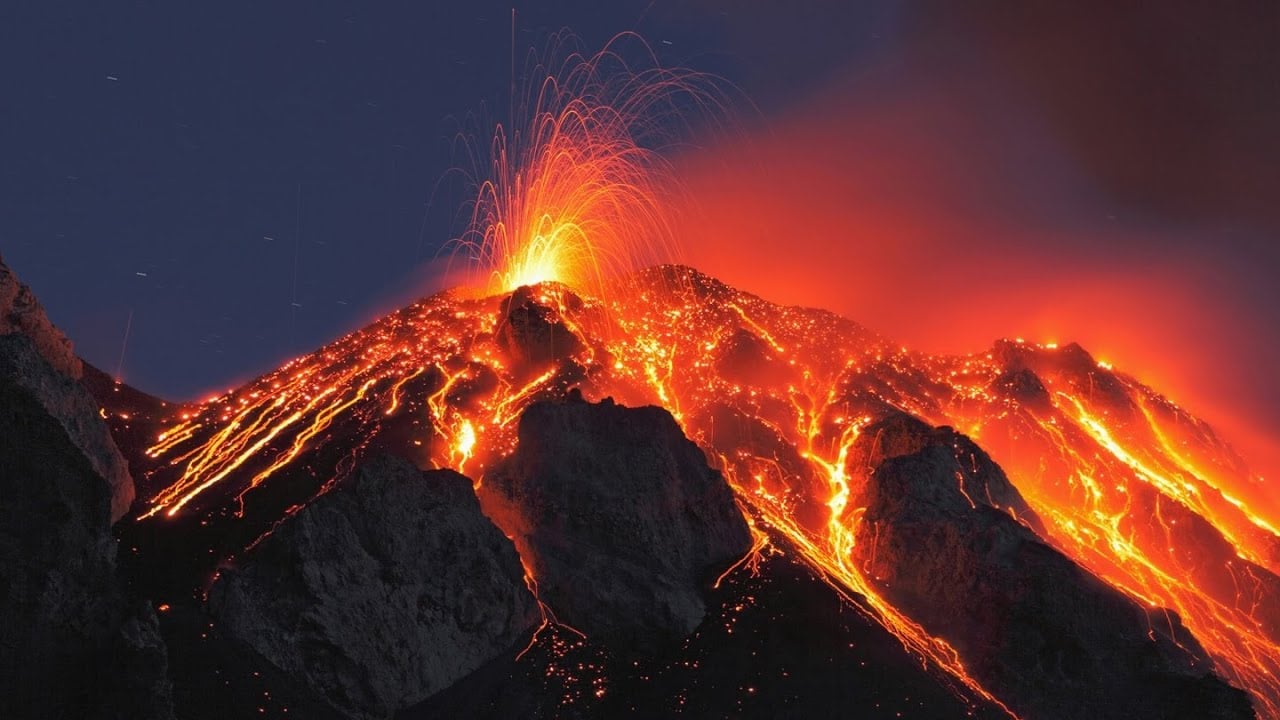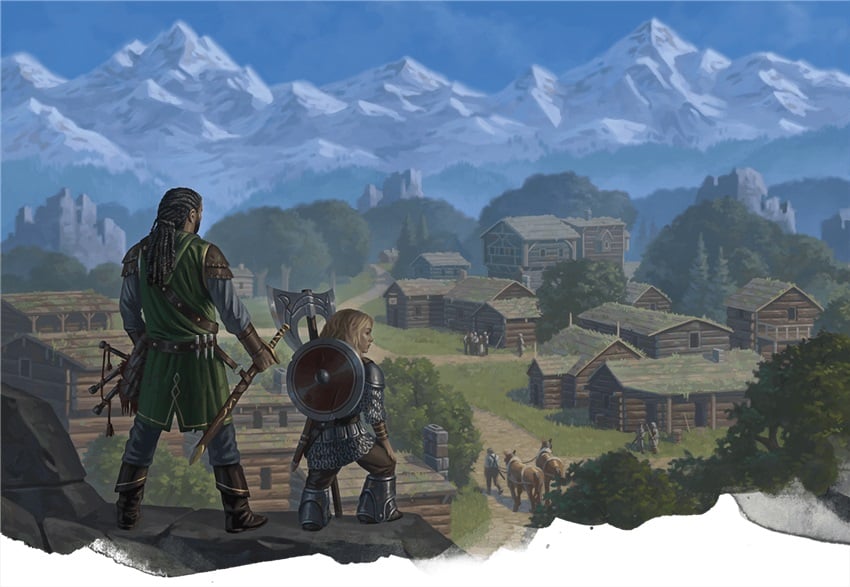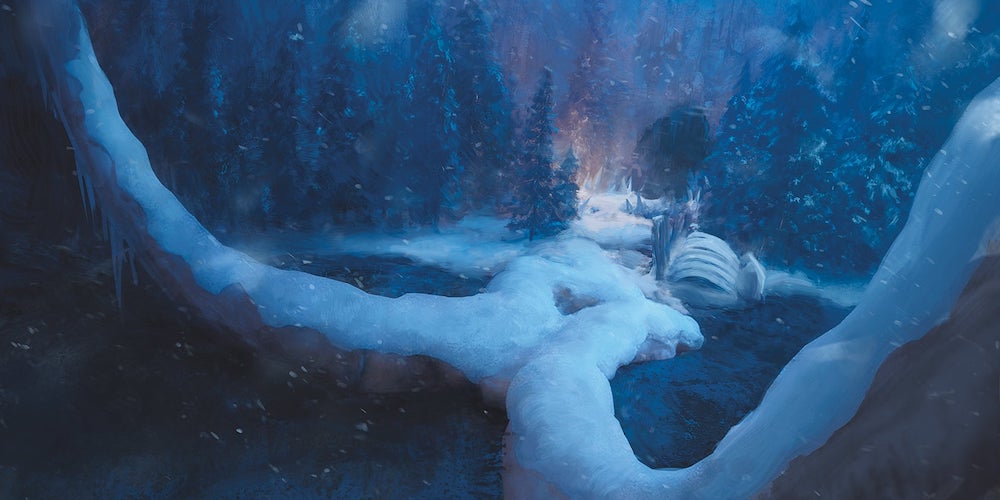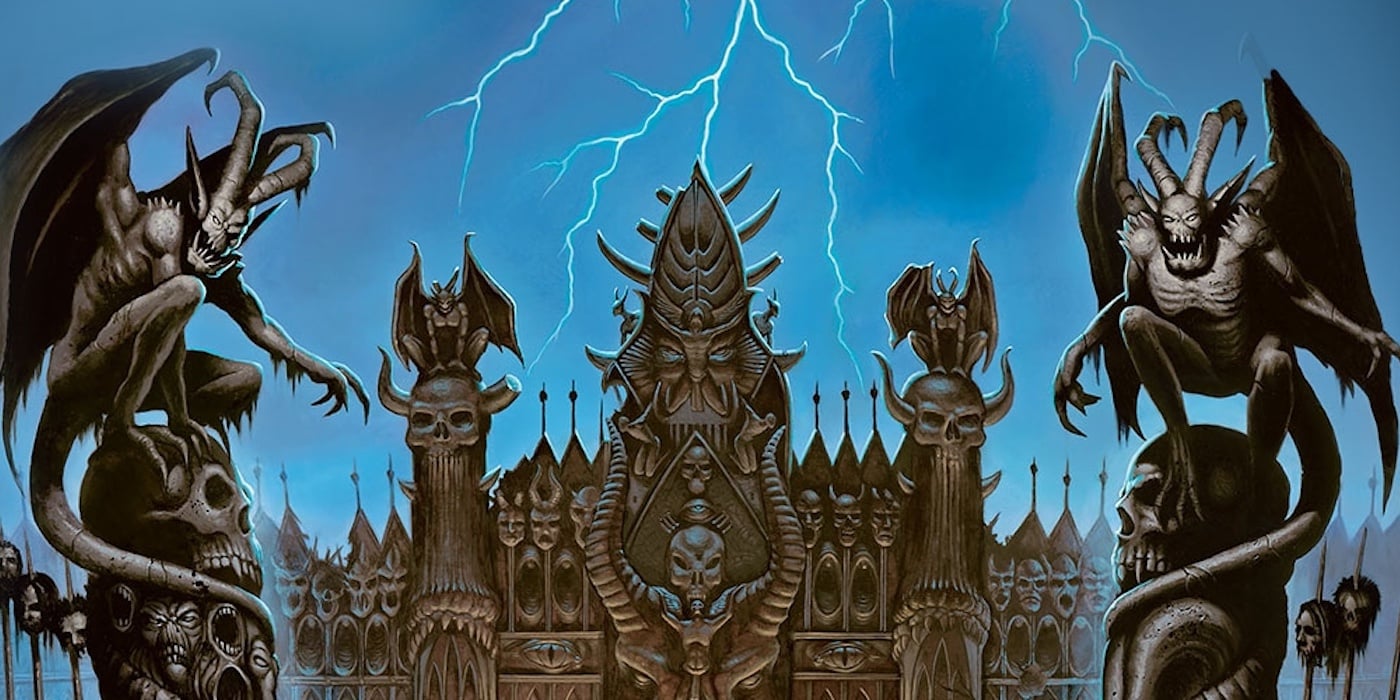D&D doesn’t have to just take place in a dank cave and/or dark, foreboding woods. Here are five other environments for your next adventure.
At some point in any given D&D adventure, even in the deepest, dankest, dungeon crawl, you’re going to go from one location to another. You might even have a whole adventure in the wilderness. But too often “the wilderness” is either a dark forest or just a dank cave full of monsters. Not every adventure location even need be inimical—you can get a lot of mileage out of going somewhere nice for a change. Here are five fun environments to try that aren’t the usual suspects.
Beach Episode

Every good campaign needs at least one beach episode. Maybe even a whole beach adventure. You might travel to a coastal villa, adventure on a tropical island chain, or visit a destination—after all, nothing beats a d2 holiday.
And the nicer the beach, the more opportunity you have to play with expectations. After all, who expects trouble in a resort town? But it’s a great opportunity to run both sea monsters (which DMs get precious little chance to do) as well as all the weird amphibious ones like sahuagin and chuul—and as a bonus, if it’s a fun locale, you can even get some good roleplay in as characters relax and have beach escapades. A tonal shift and change of pace that can fuel further adventures.
Volcano

Of course, sometimes you want something a little dangerous. Why not have a volcano? Note that it doesn’t have to actively be erupting for it to be a change of scenery. And around a volcano, there’s all sorts of ways to play it.
Obsidian hewn wasteland. Arid lava zone. Or go the other route and play up the fertile ground, rich with lush greenery and vibrant trees belying the liquid magma just below the surface. Either way, this environment is a great time to break out salamanders, or azer, or other fiery monsters—or alternatively, give less themed monsters a bit of a volcanic vibe to reinforce the theme.
Farmland

Sometimes you gotta hit ’em where they live. And in this case, it’s not the environment itself, it’s the potential for things to go awry. Because of the implication, if you will. And that’s where some lush, verdant agricultural land can come into play. This could be arable farmland growing a variety of crops, from fields of wheat to tall cornrows or flooded rice paddies or just a vegetable garden full of thieving halflings.
The point is to paint a pastoral, idyllic picture of what the landscape is like. And how it feeds the community of beloved NPCs (or just hapless jerks who happen to live there) and then you mess it up with like a bandit raid or a hobgoblin army or some other tyrannical, imperial type threat. It’s the threat of violence juxtaposed with a thing that people depend on.
Two extremely human endeavors—agriculture and violence—are drama. It’s compelling. It’s a way to make your adventure get to the kind of emotional core a Studio Ghibli film might go for without doing just a surface-level homage to the aesthetics or whatever.
Taiga

Gotta make it cold. But cold in a way that has people wondering wait, what did my environmental sciences teacher say it was again? And that’s where the Taiga comes in.
If you don’t know what that is, I don’t blame you. Taiga is a forest, but it’s cold. You might call it a boreal forest if you want to sound like you’re in a Soulslike game. Either way, taiga is like a forest but cold. There’s snow and big coniferous tress that hang on to said snow. It’s a severely threatened by climate change, so you probably won’t get to see much of it in the real world if you don’t go, like, now-ish. May as well set an adventure there!
Not only is it a chance for the DM to use winter monsters, it’s also a chance to break out the hot springs in an icy locale, or the reindeer and Christmas and/or nondenominational winter light up holiday aesthetics.
Ancient Tourist Destination

D&D is full of ancient ruins that have been abandoned and you go there and there’s a bunch of skeletoons that come to life and try to kill you, but you kill them, and then you solve ancient traps and find an ancient treasure. And it’s all empty. But what if you went to visit an ancient ruin that was actually a tourist destination. Not haunted by undead. Or full of curses or weirdly active traps.
Just like an old place that people spend money to travel to so they can behold the wonder. It’s worldbuilding in an adventure. And if you’re here scoffing at the idea, thinking, “but how do you put an adventure in that?” Let me remind you that there’s several series that all have weirdly brown/orange book covers with gold embossed lettering that do exactly that. Whether it’s National Treasure and its tour of Americana or The DaVinci Code going to both the Vatican AND the Louvre.
Put an adventure in a place like this! Establish what tourism is like—what do people who travel do in the world? Make your world full of more than just peasants and merchants waiting for PCs to come along. Plus you can still have all the merchants and peasants, but now they’re selling themed merch!
Happy adventuring!
Don’t Miss:
Read more at this site
